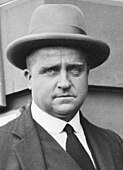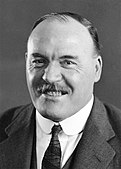| |||||||||||||||||||||||||||||||||||||||||||||||||
All 90 seats in the New South Wales Legislative Assembly 46 Assembly seats were needed for a majority | |||||||||||||||||||||||||||||||||||||||||||||||||
|---|---|---|---|---|---|---|---|---|---|---|---|---|---|---|---|---|---|---|---|---|---|---|---|---|---|---|---|---|---|---|---|---|---|---|---|---|---|---|---|---|---|---|---|---|---|---|---|---|---|
| Registered | 1,465,008 | ||||||||||||||||||||||||||||||||||||||||||||||||
| Turnout | 1,336,827 (96.40%) ( | ||||||||||||||||||||||||||||||||||||||||||||||||
| |||||||||||||||||||||||||||||||||||||||||||||||||
 Results by division for the Legislative Assembly, shaded by winning party's margin of victory. | |||||||||||||||||||||||||||||||||||||||||||||||||
 Composition of New South Wales Legislative Assembly following the election. | |||||||||||||||||||||||||||||||||||||||||||||||||
| |||||||||||||||||||||||||||||||||||||||||||||||||

The 1932 New South Wales state election was held on 11 June 1932. This election was for all of the 90 seats in the 30th New South Wales Legislative Assembly and it was conducted in single member constituencies with compulsory preferential voting. It was a landslide victory for the UAP/Country Party coalition of Bertram Stevens, which had a majority of 42 in the Assembly.[1][2][3]
The 29th parliament of New South Wales was dissolved on 18 May 1932 after the Governor, Sir Philip Game dismissed the Premier Jack Lang (see the crisis of 1931–32)[4] and commissioned Bertram Stevens to form a caretaker government.[5] Lang's government had a majority of 20 at the time of the dismissal. In this election, the Australian Labor Party (NSW) and the Federal Executive of the Australian Labor Party, which had separated in 1931 (see Lang Labor), endorsed separate candidates. The ALP (Federal) had candidates in 43 seats but none were elected. The parties were re-united in 1936. The campaign was marked by mass Labor Party public meetings including, allegedly, the largest public meeting in Australian history when Lang addressed 200,000 people at Moore Park on 5 June.
- ^ Cite error: The named reference
Green 1932was invoked but never defined (see the help page). - ^ "Part 5B alphabetical list of all electorates and Members since 1856" (PDF). NSW Parliamentary Record. Parliament of New South Wales. Retrieved 20 April 2020.
- ^ "Former members of the New South Wales Parliament, 1856–2006". New South Wales Parliament. Retrieved 4 December 2019.
- ^ Nairn, Bede. "Lang, John Thomas (Jack) (1876–1975)". Australian Dictionary of Biography. Canberra: National Centre of Biography, Australian National University. ISBN 978-0-522-84459-7. ISSN 1833-7538. OCLC 70677943. Retrieved 2 November 2021.
- ^ Ward, John M. "Stevens, Sir Bertram Sydney Barnsdale (1889–1973)". Australian Dictionary of Biography. Canberra: National Centre of Biography, Australian National University. ISBN 978-0-522-84459-7. ISSN 1833-7538. OCLC 70677943. Retrieved 2 November 2021.


